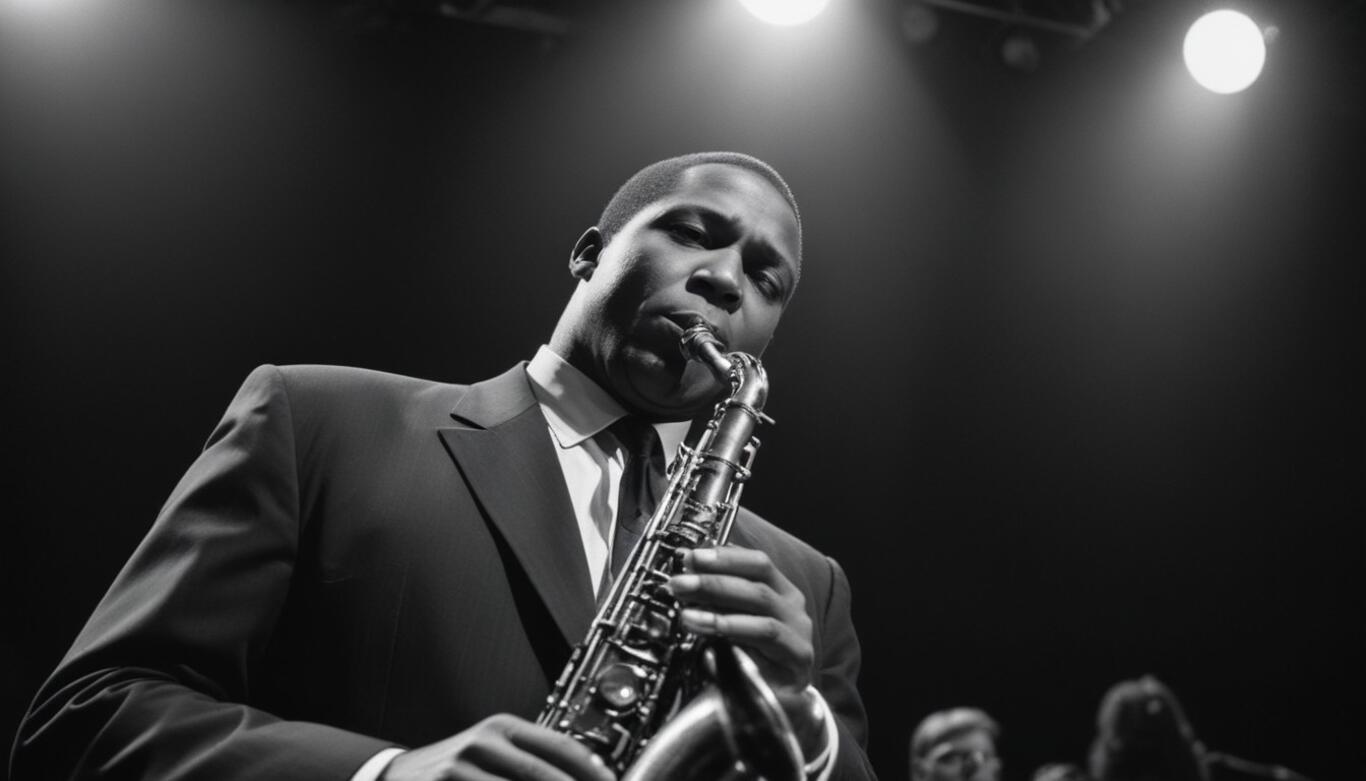Blue Train - John Coltrane House version!

Download Blue Train - John Coltrane House version! here as an MP3
Play: Blue Train - John Coltrane House version!
This track absorbs House and Elektro beats and doesn't blink! Blue Train is the second studio album by John Coltrane, released in 1958 on Blue Note Records, catalogue BLP 1577. Recorded at the Van Gelder Studio in Hackensack, New Jersey, it is Coltrane's second solo album, the only one he recorded for Blue Note as a leader, and the only one he conceived personally for the label.
John Coltrane's next major album, 1960's Giant Steps, would break new melodic and harmonic ground in jazz, whereas Blue Train adheres to the hard bop style of the era.
"Blue Train" is a jazz composition and the title track of John Coltrane's 1957 album.
Here's a musical analysis
1. Hard Bop Style: "Blue Train" is a quintessential hard bop composition, characterized by its driving rhythms, bluesy melodies, and strong sense of swing. The hard bop style emerged in the 1950s as a response to the bebop movement, incorporating elements of blues, gospel, and R&B into the jazz idiom. "Blue Train" exemplifies this style with its energetic groove and soulful melodies.
2. Form: The song follows a standard 32-bar AABA form, common in many jazz standards. The A sections typically feature the main melody, while the B section introduces a contrasting harmonic progression. This form provides a familiar structure for improvisation and allows the musicians to explore different melodic and harmonic ideas throughout the performance.
3. Harmonic Progression: "Blue Train" is based on a classic 12-bar blues progression, with a few variations and extensions. The chord changes typically include a series of dominant seventh chords, with occasional ii-V progressions and chromatic passing chords. The bluesy harmonic language adds depth and richness to the composition, providing a foundation for improvisation and creative expression.
4. Melodic Theme: The melody of "Blue Train" is catchy and memorable, with a blues-inflected quality that reflects Coltrane's roots in the African American musical tradition. The main theme is typically played by the horns, featuring soulful and expressive phrases that evoke the spirit of the blues. The melody serves as a focal point for the ensemble, providing a framework for improvisation and collective interaction.
5. Rhythmic Drive: The song is characterized by its driving swing feel, propelled by a propulsive rhythm section and energetic horn lines. The rhythm section, including drums, bass, and piano, establishes a tight and swinging groove that propels the song forward. The syncopated rhythms and accents add to the song's energy and momentum, creating a sense of excitement and urgency.
6. Instrumentation: "Blue Train" typically features a small jazz ensemble consisting of saxophone, trumpet, piano, bass, and drums. Each instrument contributes to the overall texture and mood of the piece, with opportunities for solo improvisation and collective interaction. Coltrane's saxophone playing is particularly notable, with his soulful and virtuosic solos showcasing his innovative approach to improvisation.
conclusion
"Blue Train" is a classic jazz composition that exemplifies John Coltrane's mastery of the hard bop style. Its infectious groove, soulful melodies, and dynamic improvisation have made it a beloved and enduring piece of jazz music that continues to inspire musicians and audiences alike.